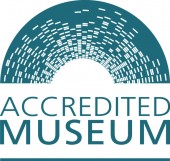This website uses cookies so that we can provide you with the best user experience possible. Cookie information is stored in your browser and performs functions such as recognising you when you return to our website and helping our team to understand which sections of the website you find most interesting and useful.
Becoming a Museum
In 1968 the house was separated from its service wing (which became known as No.1a) and No.1 was put up for sale. It was bought by Mr. Bernard Cayzer and later given to the Bath Preservation Trust, established in 1934. Mr. Cayzer provided funds for its restoration so it could be opened as a Georgian townhouse museum and also provide office space for The Bath Preservation Trust.
Work to the house for this purpose was extensive and of its time. The furnishing of the house was undertaken by a distinguished committee including the Keeper of Furniture and Woodwork at the Victoria and Albert Museum and the interior designer, Jean Munro. The collections were selected and the rooms arranged to reflect the distinction between male and female domains and were influenced by what was known about the occupants of the house and by historic figures associated with Bath. Collections included period fittings to replace some that had been lost or replaced, the first floor window sills were raised to their original height, joinery was copied and installed and a new back stair was constructed.
Another major redevelopment project was completed recently when the main house was reconnected to its original service wing at No. 1a. We took this opportunity to carry out some major restoration and conservation and the extended museum reopened to the public on 21 June 2013. The project was called The Whole Story Project.
The Trust’s library and archives are now accessible. Some relate to No.1 but others tell the story of campaigns to save Bath’s built heritage.
ACE Museum Accreditation Scheme
This is a scheme administered by Arts Council England (ACE) which assigns accredited status to UK museums meeting the standards set out in its publication The Accreditation Standard.
to UK museums meeting the standards set out in its publication The Accreditation Standard.
No.1 Royal Crescent is an Accredited museum – as are all BPT museums.


